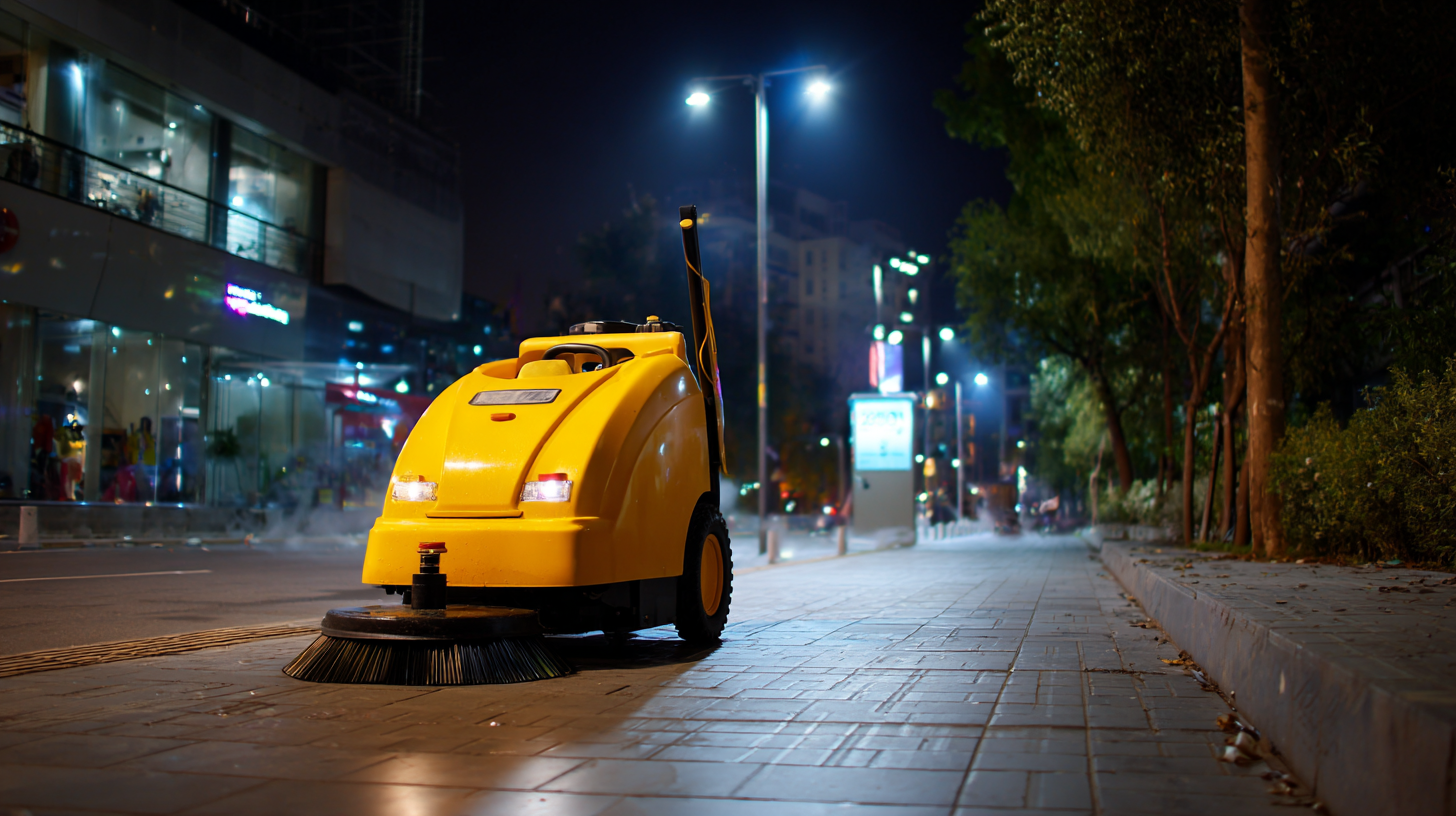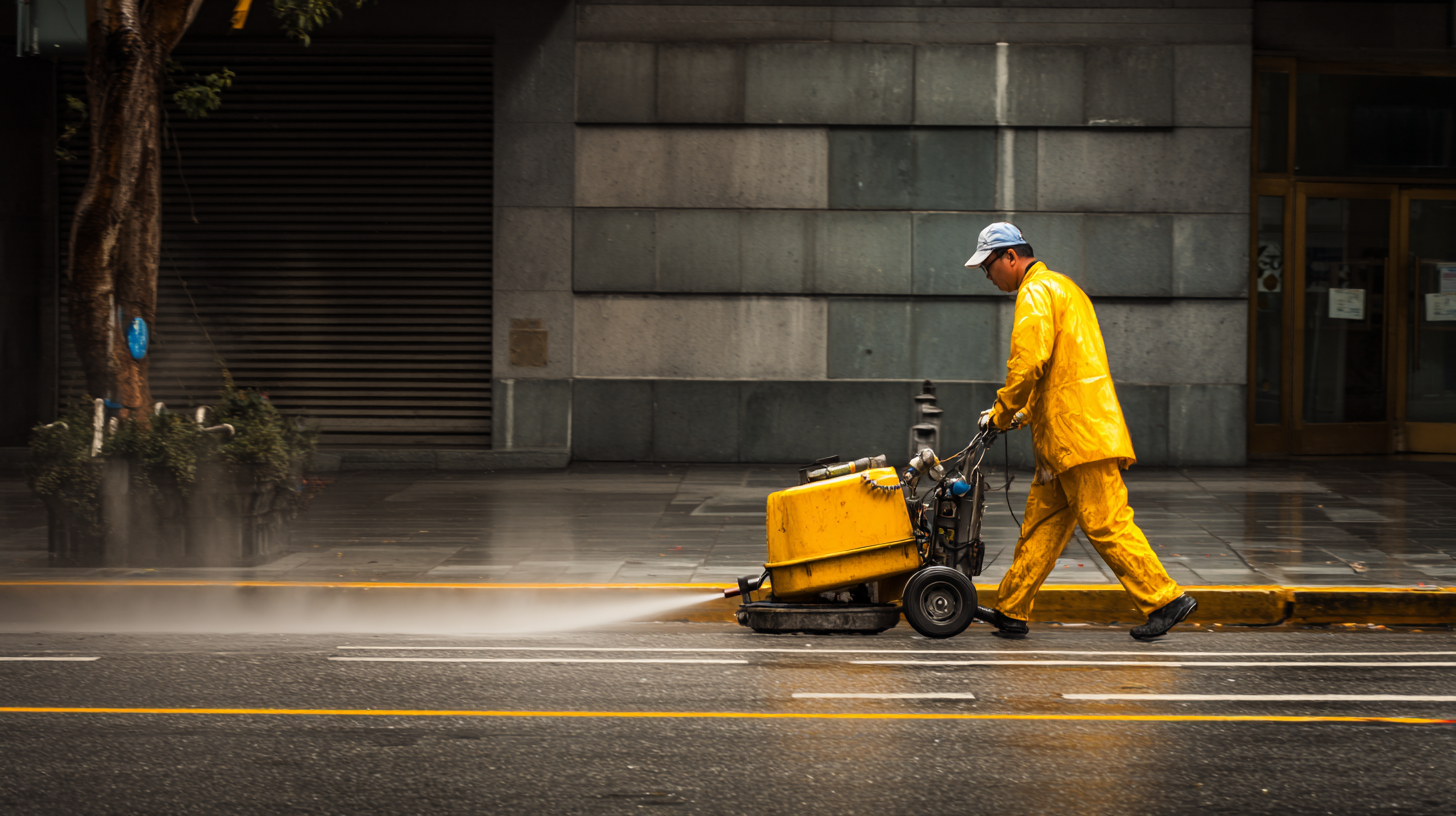Leave Your Message
As urban environments continue to grow and evolve, the need for effective street cleaning solutions has never been more critical. The global street vacuum cleaner market is projected to reach $3.51 billion by 2026, reflecting a robust annual growth rate driven by increasing urbanization and the rising demand for environmentally friendly cleaning methods. Street vacuum cleaners play a crucial role in maintaining cleanliness, reducing pollution, and enhancing the aesthetic appeal of cities. With a plethora of options available, choosing the right street vacuum cleaner can be a daunting task for municipalities and contractors alike.

This ultimate guide aims to provide comprehensive comparisons of various street vacuum cleaners, highlighting their features, efficiency, and cost-effectiveness to assist stakeholders in making informed decisions that contribute to cleaner and greener urban spaces.
Electric street vacuum cleaners have emerged as a vital tool for maintaining clean urban environments, offering numerous advantages that traditional methods cannot match. One of the significant benefits is their eco-friendliness. Unlike gas-powered cleaners, electric models produce zero emissions, contributing to improved air quality in densely populated areas. This is particularly crucial for cities, where air pollution is a growing concern. The quiet operation of electric street vacuums also means less noise pollution, enabling cleaning crews to work efficiently without disturbing residents or businesses.
Moreover, electric street vacuum cleaners are designed with advanced technology that enhances their effectiveness and efficiency. Many models include powerful suction capabilities and specialized attachments for tackling various debris types, from leaves to litter. This versatility ensures a thorough cleaning process that can adapt to the specific needs of different urban locales. With the added advantage of lower operating costs and reduced maintenance requirements, electric street vacuum cleaners represent a smart investment for municipalities looking to optimize their urban cleaning efforts. By embracing this innovative approach, cities can create cleaner, healthier environments for everyone.
Battery-powered street vacuum cleaners have
revolutionized urban cleaning, offering a blend of mobility and effectiveness that traditional models often lack.
These innovative machines are designed to operate without the constraints of cords, enabling cleaners to navigate
densely populated areas and tight spaces with ease. Their lightweight design and agile maneuverability allow for
thorough cleaning in urban environments, ensuring that sidewalks, parks, and streets remain tidy and inviting.
When considering a battery-powered model, it's essential to look for one with a robust battery life. A unit that can run for extended periods
without needing frequent recharges is vital for maintaining workflow, especially in larger urban areas. Additionally,
examine the suction power and filtration systems; a machine that excels in capturing dust and debris not only enhances
cleanliness but also protects public health by reducing airborne particles.
For optimal efficiency, schedule regular maintenance for your vacuum cleaner to ensure it operates at peak performance.
Always keep an eye on battery health, and consider investing in a model equipped with energy-efficient technology.
Finally, train operators to understand the best practices for navigating
urban landscapes. This can significantly improve the overall effectiveness and longevity of your street cleaning efforts.
Robotic street vacuums are revolutionizing urban cleaning, offering an innovative solution for smart city infrastructures. These advanced machines utilize cutting-edge technology to enhance efficiency in public space maintenance. With the ability to autonomously navigate complex urban environments, robotic street vacuums reduce the need for manual labor while improving the overall cleanliness of city streets. Their integration into urban cleaning strategies not only streamlines operations but also utilizes real-time data for optimal route planning and debris collection.
One of the primary benefits of robotic street vacuums is their capability to operate during off-peak hours, minimizing disruption to daily city life. Equipped with sensors and intelligent mapping systems, these machines can effectively identify and avoid obstacles, ensuring safe and thorough cleaning paths. Additionally, their eco-friendly design contributes to sustainable urban development, as many models run on electric power, reducing carbon footprints. By incorporating robotic street vacuums into their cleaning arsenal, cities can enhance the quality of urban life, promote environmental responsibility, and embrace the future of smart city solutions.
| Model | Suction Power (Pa) | Battery Life (hours) | Noise Level (dB) | Features |
|---|---|---|---|---|
| Model A | 2500 | 3 | 70 | Smart Navigation, GPS Tracking |
| Model B | 2300 | 2.5 | 68 | Obstacle Detection, App Control |
| Model C | 2800 | 4 | 75 | Real-time Monitoring, Automatic Return |
| Model D | 2400 | 3.5 | 65 | Multi-Surface Cleaning, Eco Mode |
In urban environments, the design and efficiency of street vacuum cleaners significantly influence mobility and access. Compact street vacuum designs are becoming increasingly popular due to their ability to navigate tight spaces and busy streets while maintaining effective cleaning capabilities. These smaller machines can easily maneuver around parked cars, street furniture, and pedestrians, ensuring that urban areas remain clean without causing disruptions.
 One tip for city planners and cleaning crews is to prioritize the integration of these compact vacuums in areas with high foot traffic. By deploying these efficient machines, municipalities can enhance their cleaning strategies without compromising accessibility. Moreover, investing in electric, quieter models can further minimize noise pollution, making urban spaces more pleasant for residents and visitors alike.
One tip for city planners and cleaning crews is to prioritize the integration of these compact vacuums in areas with high foot traffic. By deploying these efficient machines, municipalities can enhance their cleaning strategies without compromising accessibility. Moreover, investing in electric, quieter models can further minimize noise pollution, making urban spaces more pleasant for residents and visitors alike.
Another key consideration is the maintenance and operation of these street vacuums. Regular training sessions for operators on the unique features of compact models will maximize their performance. Understanding how to efficiently navigate different urban landscapes and adjust settings for various debris types can lead to a significant increase in the effectiveness of street cleaning efforts.
When choosing a street vacuum cleaner, understanding the role of filter technology is crucial for effective urban cleaning. Advanced filters not only capture dirt and debris but also play a significant role in reducing airborne pollutants, contributing to cleaner air and healthier soil. HEPA filters, for example, are exceptional in trapping microscopic particles, ensuring the environment remains dust-free. This is particularly vital in urban areas where pollution levels can be high.
**Tip:** Look for street vacuum cleaners equipped with multi-stage filtration systems. These systems combine various filters—like pre-filters and HEPA filters—to maximize efficiency and ensure that even the smallest particles are eliminated from the air.
Moreover, the material and maintenance of filters can greatly impact cleaning performance. Filters made from durable materials tend to have longer lifespans and maintain efficiency over time. Regular cleaning and replacement of filters can prevent clogging and ensure the vacuum operates at peak performance, ultimately enhancing the overall cleaning effectiveness.
**Tip:** Schedule routine maintenance checks for your street vacuum cleaner, including filter inspections and replacements, to avoid reduced suction power and improve its longevity.

